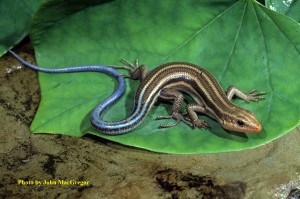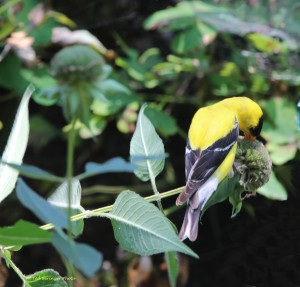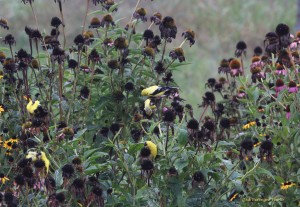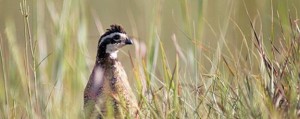National Sustainable Agriculture Coalition
On its second day back in session after a five-week August recess, the House of Representatives voted 262-152 on Tuesday, September 9 to pass H.R. 5078, a bill that would prohibit the Environmental Protection Agency (EPA) and Army Corps of Engineers (the Corps) from finalizing and implementing the proposed Waters of the United States (WOTUS) rule.
After an hour of debate, the House passed the “Waters of the United States Regulatory Overreach Protection Act” largely—though not entirely—along party lines. Just one Republican voted against the bill while 35 Democrats voted for passage. See the full vote count here.
Representative Steve Southerland (R-FL) introduced the bill, which would require EPA and the Corps to cease work on the current proposed rule, and instead consult with local and state governments to develop a regulatory framework defining waters of the US. In essence, the bill, if it were to become law, would lock in place the current regulatory uncertainty and continue the long, costly, and painful process of policy making via litigation. There are no current plans for Senate consideration of the House-passed bill, however.
The Rule
The 88-page WOTUS rule has been a source of controversy since the EPA and Corps issued it in April of this year to clarify the murky, and subsequently litigated, definition of “waters of the US” in the Clean Water Act (CWA). Under the CWA, waters of the US are defined as traditional navigable waters; interstate waters; and all other waters that could affect interstate or foreign commerce, impoundments of waters of the US, tributaries, the territorial seas, and adjacent wetlands.
This final category created confusion, particularly when applied to wetlands. In light of Supreme Court cases in 2001 (Solid Waste Agency of Northern Cook County v. U.S. Army Corps of Engineers, 531 U.S. 159) and 2006 (Rapanos v. United States, 547 U.S. 715), EPA proposed the WOTUS rule to provide clarity regarding the waters under its jurisdiction. Along with the proposed rule, EPA and Corps issued an Interpretive Rule that applies specifically to CWA Section 404 permitting for discharge of dredge and fill material into waters (including wetlands).
Reactions to both rules have been mixed, to say the least. While some groups applaud the proposed rule for its attempt to provide consistency to CWA implementation, others have outright opposed the entire rulemaking process.
NSAC has been involved from the beginning, submitting comments on the Interpretive Rule in July. Public comments on the WOTUS proposed rule are due October 20.
The Vote
H.R. 5078 calls for the EPA and Corps to scrap both the WOTUS rule and Interpretive Rule. It directs EPA and the Corps to develop a new regulatory proposal in collaboration with state and local officials. The first report on this proposal would be due 12 months from the bill’s enactment and would require a minimum of 180 days for public comment.
Debate on the bill was largely a back and forth between House Republicans claiming the rule is a federal “power grab” and House Democrats defending the rule’s necessity. In one of the more dramatic moments, Representative Marcy Kaptur (D-OH) called the legislation a “Death Bill” and displayed a jar of algae-filled water from Lake Erie, referring to the Toledo water crisis that left half a million people in Kaptur’s district without drinking water for three days this summer. On the other side of the debate, Representative Collin Peterson (D-MN) argued that the bill was essential, as the EPA did not “understand the real world effects these regulations will have on farmers across the country.”
The EPA has continually stated the WOTUS rule is not intended to expand jurisdiction or bring agriculture under heavier regulation, even launching a “Ditch the Myth” campaign to counter the Farm Bureau’s “ditch the rule” campaign. Ahead of the House vote, the agency released a Question and Answer document attempting to respond to the major concerns raised by the public and the farming community regarding the scope of the rule. The new Q&A document is quite an improvement over previous attempts to explain the rule’s impact on agriculture.
Still, confusion and hyperbole reign — Representative Tim Bishop (D-NY) proposed two amendments, one of which was intended to provide clarification that the EPA would not regulate “puddles, water on driveways, birdbaths, or playgrounds.” The House did not pass any amendments to the bill.
The Veto?
The bill is unlikely to go far in the Democrat-controlled Senate, let alone be considered in the few, remaining daysbefore they break in October. Should it make it to the President’s desk, the Obama Administration has already threatened to veto it. In a Statement of Administration Policy published September 8, the office criticized the legislation, writing:
“H.R. 5078 would derail current efforts to clarify the scope of the CWA, hamstring future regulatory efforts, and create significant ambiguity regarding existing regulations and guidance. It would deny businesses and communities the regulatory certainty needed to invest in projects that rely on clean water. In addition to vitiating the specified draft regulations and already withdrawn guidance, the bill would call into question ‘any successor document’ or ‘substantially similar’ proposed rule or guidance, even if all stakeholders reached consensus. If enacted, H.R. 5078 could also incite further litigation that would only magnify confusion and uncertainty among affected stakeholders.”
Clearly, H.R. 5078 is more symbolic than it is substantive. NSAC has already expressed its disapproval at Congress’ attempts to disrupt the public rulemaking process. We are continuing to work with our members and intend to submit comments for the WOTUS rule this fall.




